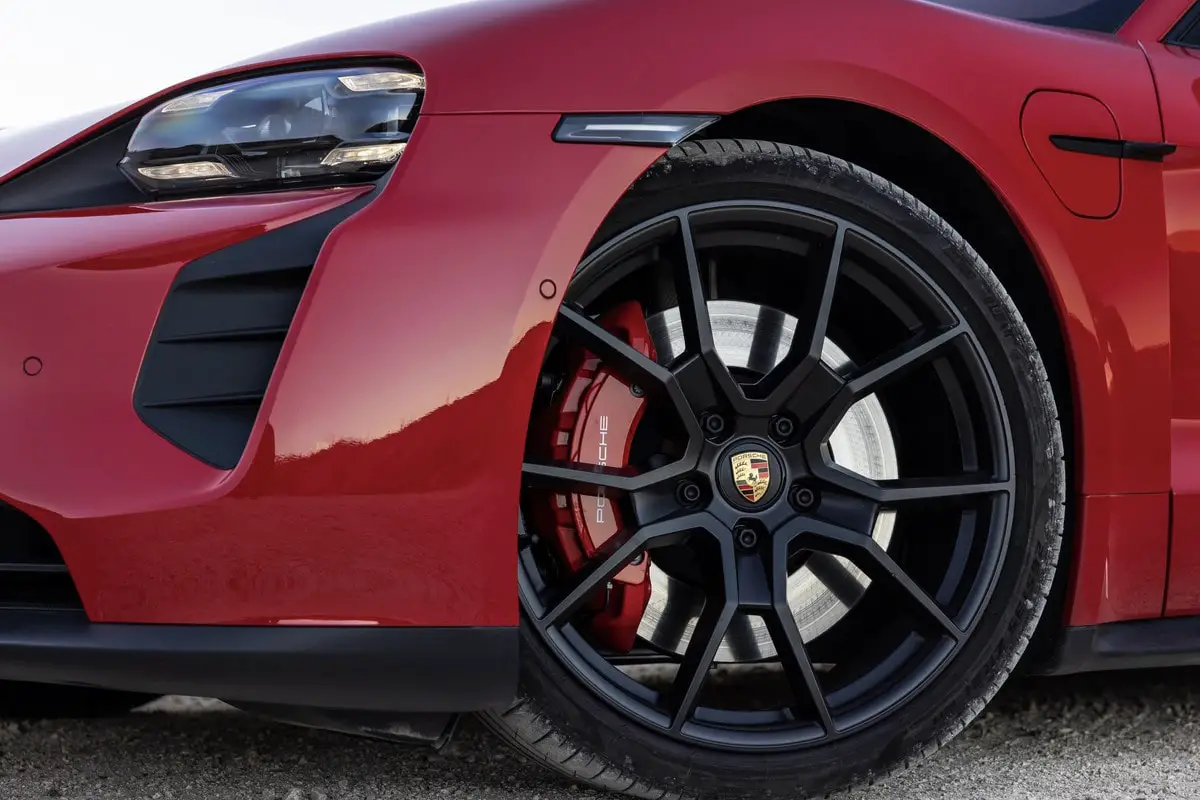New cars are becoming safer and safer with every new release. This comes in the form of physical safety features, with better crumple zones and sensors, to software features such as the Warn and Brake system fitted to the Porsche Taycan brakes.
This feature is designed to warn you of impending head-on collisions, initiate the appropriate braking maneuvers, or provide steering assistance. In this article, we will look at what Warn and Brake is, how to turn it on and off, and what the system’s limitations are.

It is worth noting that Porsche’s Warn and Brake feature is a safety assist and should not be a substitute for driving with due care and responsibility. While it is an aid that has, and will, save many lives, it is simply that: an aid.
Table of Contents
What is Warn and Brake assist, and how does it work?

Porsche’s Warn and Brake Assist, more commonly known as Autonomous Emergency Breaking (AEB), is a safety feature that first appeared in the late 2000s on high-end vehicles. However, more recently, it’s become a standard safety feature on new cars.
The feature uses sensors on the car to detect and prevent potential accidents. When noting a potentially critical situation, the AEB system will first try to warn the driver that action is needed. If no driver action is taken and a collision is expected, braking and steering will be applied automatically.
The degree of brakes and steering will always depend on the situation. However, the system aims to reduce the speed of the collision or avoid the impact altogether.
How to turn Warn and Brake on and off

Porsche Taycan brakes are fitted with an AEB system, which Porsche has trademarked as ‘Warn and Brake’. This feature is automatically switched on when you turn on the ignition and the car has established operation readiness.
However, there are situations when you should switch it off, such as during removal, when driving off public roads, or during transport, (e.g., on a car transporter, train, or ship).
Learn how to do this in the owner’s manual. I’ve summarized the instructions below.
- In the car’s settings, go to Assistance.
- Choose Basic assistance.
- Select Warn and Brake Assist.
From here, you can change all the Warn and Brake features, including turning the feature on or off. As mentioned above, this feature will turn on whenever the ignition is switched on. Please, be aware of this if you are in any of the above-mentioned circumstances.
Porsche Taycan Warn and Brake System

System Limits
The Warn and Brake Assist system has its limitations. Not all road users and dangerous situations can be recognized correctly and in time. For example, the sides of the vehicle and the rear area are not monitored.
In some complex driving situations, the system can issue undesired warnings and perform undesired brake interventions. Understanding the system’s limitations and how this could affect your driving is essential.
You’ll find more information about the Warn and Brake system limits in the owner’s manual. Consult it before operating this assist.
System Availability
As previously mentioned, Porsche’s Warn and Brake assist is turned on automatically when the ignition starts, and the car is ready to go.
The system is then available above walking speed and can react to pedestrians or cyclists up to 85 km/h (53 mph). It can also respond to vehicles up to a speed of 250 km/h (156 mph).
However, the system does not respond to animals, crossing vehicles, oncoming vehicles, and objects such as bars, fences, and rail vehicles. AEB systems are designed to be a safety feature in emergencies, not a self-driving system!
System Restrictions
There are several situations where the Warn and Brake system may become unavailable. Please see the list below:
- Up to 10 seconds after establishing readiness for operation
- If the seat belts are not fastened
- In sharp bends
- In the presence of reflective objects such as guardrails or when entering a tunnel
- In heavy rain, snow, fog, and ice
- In the event of damage to the windscreen
- In the event of damage to the bumper, e.g., through parking bumps
- In the event of damaged or soiled radar sensors
- If the Adaptive Cruise Control (ACC) malfunctions
- And more
Conclusion
Porsche Taycan brakes are fitted with an autonomous emergency braking system which Porsche calls Warn and Brake. This system is an intelligent feature that helps to keep you and other road users safe.
Using the information above, you can effectively use the Warn and Brake Assist system on your Porsche Taycan. Remember to switch it off in certain situations, be aware of the system limits, and always prioritize your safety while driving.
Always drive responsibly and consult the owner’s manual below if you have any questions.
FAQs
What is Warn and Brake Assist, and how does it work?
This FAQ seeks to provide a detailed explanation of how the Warn and Brake Assist system functions and its purpose in enhancing safety.
Is Warn and Brake available on all car models?
This question addresses whether this safety feature is a standard inclusion on all vehicles or if it’s specific to certain car models or manufacturers.
How can I turn Warn and Brake on or off in my car?
This FAQ guides users on how to activate or deactivate the Warn and Brake system in their specific vehicle, as it may vary between manufacturers.
What are the limitations of the Warn and Brake system?
This question delves into the restrictions and potential scenarios where the Warn and Brake system may not work effectively, highlighting its limitations.
Is the Warn and Brake system a substitute for responsible driving?
This FAQ emphasizes the importance of responsible driving and clarifies that the system is an aid rather than a replacement for safe and attentive driving.
